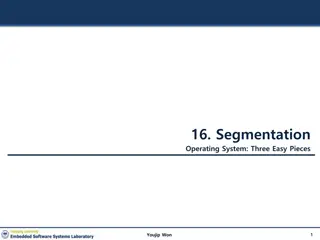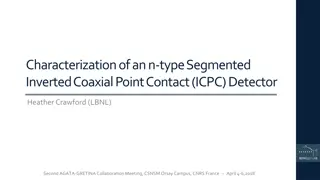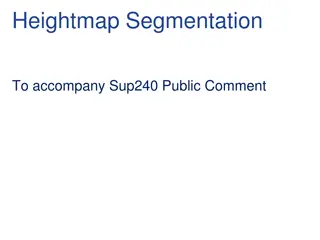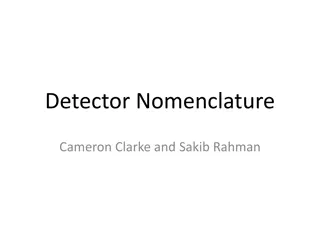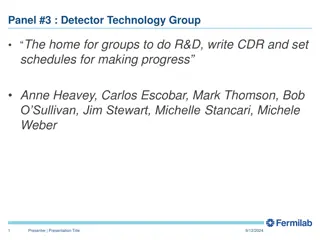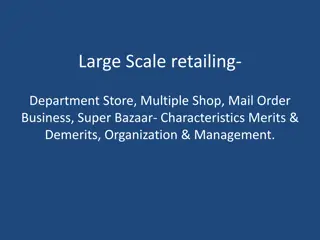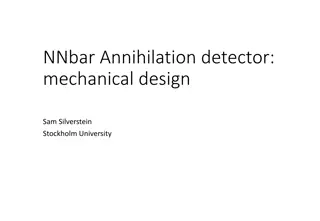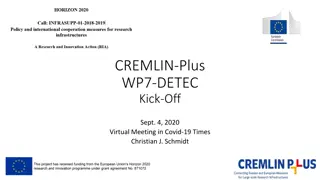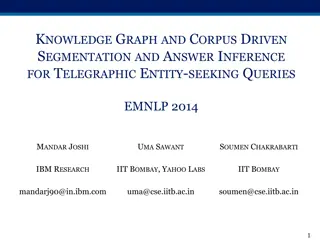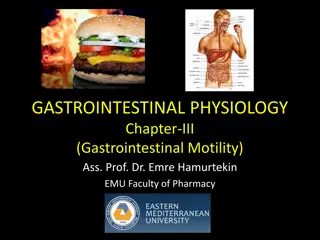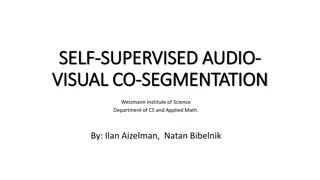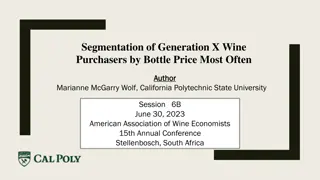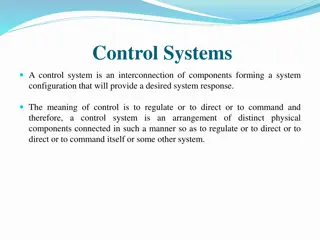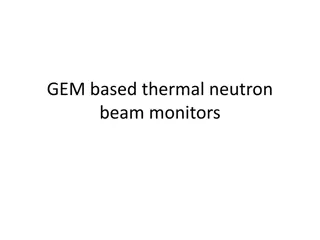Efficient Virtual Segmentation for Large-scale Detector Systems
Highly segmented detectors with millions to billions of readout channels require a practical approach for simulation and reconstruction. Implementing each channel separately is impractical, necessitating the use of virtual segmentation to define readouts for different detector components. Dependencies, functionality requirements, and specific segmentation strategies like Cartesian grids, R-Phi readouts, and hexagons are addressed in this content.
Download Presentation

Please find below an Image/Link to download the presentation.
The content on the website is provided AS IS for your information and personal use only. It may not be sold, licensed, or shared on other websites without obtaining consent from the author. Download presentation by click this link. If you encounter any issues during the download, it is possible that the publisher has removed the file from their server.
E N D
Presentation Transcript
Sensitive Detector Segmentation Norman Graf (SLAC) LC-ECFA Meeting, DESY May 28, 2013
Problem Statement LC Detectors being considered for the ILC and CLIC are highly segmented, resulting in hundreds of millions to billions of readout channels. Implementing each readout channel as a separate volume in Geant4 is impractical. Define Sensitive Detectors as larger volumes and use virtual segmentation to define readouts, e.g. Tracking sensitive detector is silicon wafer, virtual segmentation returns pixels or strips. TPC sensitive detector is full endplate, virtual segmentation returns pads Calorimeter sensitive detector is scintillator sheet, or gas volume, virtual segmentation returns cells. 2
Functionality Given local position, return cell ID Given cell ID, return local position Given cell ID, return list of neighboring cell IDs Return cell size (allows energy density clustering) 3
Dependencies Need to have a separate package containing segmentation classes on which both the simulation and reconstruction packages depend. Do not want to couple the reconstruction to Geant4. Also don't want to have two separate implementations of segmentors. 4
slic reco G4SD binding lcdd Geometry ? Geant4 Segmentation
Cartesian Grid For each grid x deltaX y deltaY Allows for effective gaps in between pads
R-Phi Readout, e.g. BeamCal For each annulus: rmin rmax nCells phi0 deltaPhi Allows for effective gaps in both radius and phi Allows for staggered cells 7
Hexagons Define hexagon radius Can define effective gaps between cells using two radii 8
Attaching Segmentation Class to Volume Need the ability to specify location of origin and orientation of segmentation coordinates with respect to sensitive geometric volume. 9
Issues In calorimeters, how to handle Geant4 steps which straddle cell borders or cross gaps How to handle edges of segmentation classes irregular cell sizes and shapes missing neighbors Semi-Digitization How to handle position-sensitive digitization such as charge-sharing across boundaries (e.g. RPC) or efficiency of light collection in scintillator readout. 10
Software Architecture Segmentation classes should be closely related to Geant4 primitive volumes for efficiency in defining, implementing and utilizing them. Do not want reconstruction to depend on Geant4 Standalone package upon which both simulation and reconstruction classes depend. Runtime binding via plugin mechanism might lead to problems of provenance. Prefer compile-time binding of classes, run-time definitions for parameters. 11



